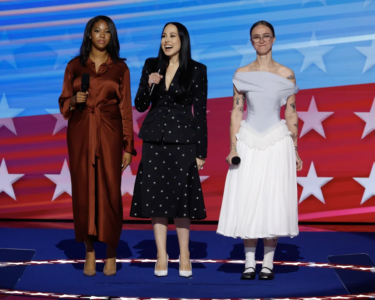The evolution of women’s running briefs in the Olympic Games reflects broader cultural shifts in fashion, function, and the ongoing debate over the sexualization of female athletes. When women first competed in track and field at the 1928 Olympics, they wore loose t-shirts and wide shorts. These garments, which prioritized modesty over aerodynamics, have since given way to tight, high-cut briefs designed for maximum performance.
However, the question of how high is too high arose sharply when Nike unveiled its kits for the 2024 Paris Olympics. A side-by-side comparison of the men’s and women’s uniforms sparked controversy due to the stark differences in design. While the men’s outfit featured a tank top and mid-length shorts, the women’s leotard was criticized for its extreme cut, which some felt overly exposed the athletes’ bodies. The debate intensified on social media, with former US track and field athlete Lauren Fleshman condemning the design for forcing female athletes to be hyper-aware of their appearance rather than focusing on their performance.
This issue isn’t new. The 2020 Tokyo Games saw the German women’s gymnastics team protest bikini-cut unitards in favor of full-body coverage to challenge the sexualization of their sport. The controversy surrounding Nike’s 2024 kits echoes these concerns, as athletes and designers alike question the necessity of revealing uniforms for women while men’s kits remain more conservative.
Historically, the transformation in women’s sportswear has been driven by both technological advancements and fashion trends. In the 1960s, as fabrics became more technical and athletic apparel more streamlined, hemlines for female athletes rose, leading to the popularization of briefs and bikini styles in the 1980s. These designs promise reduced drag and highlight the athletes’ muscular physiques, a factor that some argue contributes to confidence and, by extension, performance.
The late Florence Griffith Joyner, known for her record-breaking speed and flamboyant style, epitomized the intersection of fashion and function in sports. Her high-cut leotards and one-legged catsuits became iconic, influencing generations of athletes, including sprinter Sha’Carri Richardson. Griffith Joyner’s choice to wear eye-catching, body-conscious outfits was as much about making a statement as it was about performance, embodying the “look good, feel good, do good” mantra that persists today.
Despite the push for more revealing designs in women’s sportswear, the disparity between male and female uniforms remains a point of contention. Dobriana Gheneva, a professor at the Fashion Institute of Technology, notes that while athletes should have the freedom to choose what makes them most comfortable, the difference in coverage between men’s and women’s kits highlights ongoing gender inequities. As Gheneva puts it, “We should be beyond that at this point.”
The debate over women’s running briefs is not just about aesthetics; it’s about the broader implications of how female athletes are viewed and treated in the world of sports. While some athletes embrace the confidence that comes with high-cut designs, others question why their uniforms must be more revealing than those of their male counterparts. As the conversation around gender, performance, and sportswear continues, the evolution of women’s running briefs remains a symbol of the complex interplay between fashion, function, and feminism in athletics.





